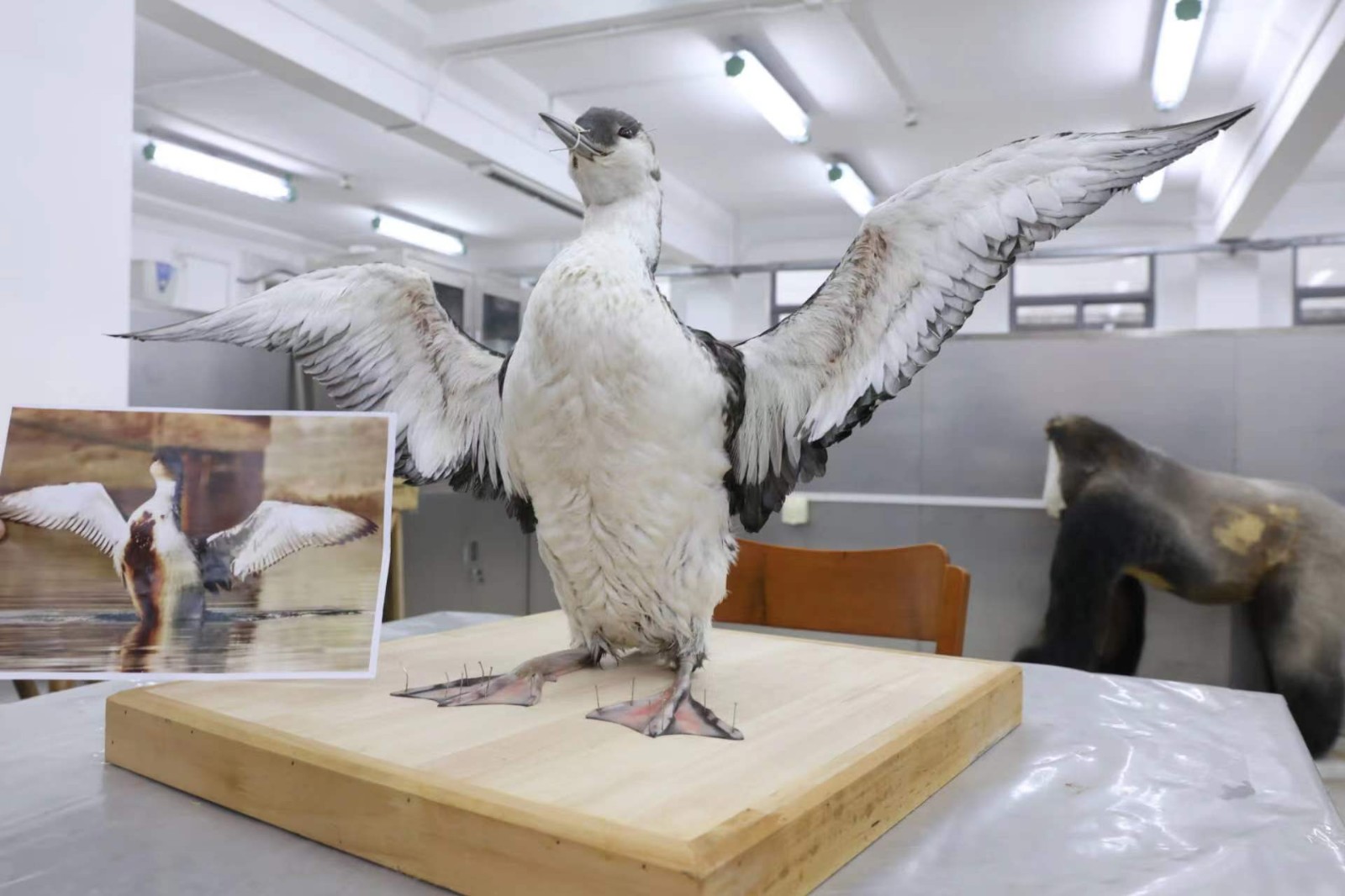The Specimen Preparation Team of Shanghai Science and Technology Museum Made the Black-throated Loon Specimen

Not long ago, many bird watchers found a black-throated loon whose neck and abdomen were badly contaminated by oil in the Century Park in Pudong New Area. A few days later, this bird was found dead and floating in the lake in the park. With the help of the operator of the Century Park and the Pudong Forestry Station, the carcass of this loon was moved to the storehouse of SNHM. On February 8, 2023, the specimen preparation team of SSTM fixed the prosthesis and hide of the loon. The black-throated loon specimen was essentially completed. It will stay in Shanghai in an exceptional way. Its life will remind the people of how important it is to protect the ecological environment.
Before that, the team made thorough preparations for creating the specimen, where they found a large number of pictures of black-throated loons, made professional analysis of the feathers and body features of the bird, chose an appropriate posture of the specimen, and dissected and cleaned the carcass after accurately measuring its every part. The team also made fine adjustments to the specimen, where they fixed the artificial eye and groomed the features. After 2~3 months of drying, they removed the fixtures and painted the colors, in order to reproduce the natural form of the specimen and make it look lifelike.
As commented by Associate Researcher He Xin of the Natural History Research Center of SNHM, the neck and entire abdomen of the black-throated loon were completely contaminated by black oil, and its appearance in the water areas and surfaces in the urban center indicated that it was probably in poor physical condition. Severe contamination by oil would cause its features to lose heat preservation and waterproofing functions, so it lost body heat. Besides, it would have been poisoned by the oil it swallowed when pecking food or cleaning its features. These are very lethal factors for a bird. In addition, the bird moved around in large areas and was highly vigilant, which made it difficult to rescue it.
In the future, this specimen will be used for science education exhibition and scientific research of the SSTM.






